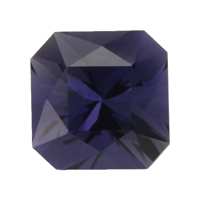FAQs on Iolite Treatments
When purchasing gemstones, understanding the processes they may undergo is crucial, which is why the FAQs on Iolite Treatments are so valuable. These FAQs on Iolite Treatments provide clear answers to common questions about the various methods used to enhance a gemstone’s color, clarity, and overall appearance. Whether you are curious about the impact of heat treatments, the use of dyes, or other enhancement techniques, the FAQs on Iolite Treatments offer essential insights that help you make informed decisions. By exploring these FAQs, you can ensure that you are fully aware of how treatments may affect the beauty and value of the gemstones you choose to buy or collect.

FAQs on Gemstone Treatments: Focus on Iolite
Gemstone treatments have been a topic of interest and concern among jewelry enthusiasts, collectors, and professionals within the gem and jewelry industry. In this blog, we’ll delve into the fascinating world of gemstone treatments with a specific focus on iolite, a lesser-known but captivating gemstone known for its striking violet to blue colors and pleochroism (showing different colors when viewed from different angles). Here are some frequently asked questions regarding the treatment of iolite and gemstones in general.
What is Gemstone Treatment?
Gemstone treatment refers to any process other than cutting and polishing that improves the appearance, durability, or value of a gem. These treatments can range from heat treatment to enhance color, to filling fractures with resins or glass to improve clarity.
Why are Gemstones Treated?
The primary reason for treating gemstones is to enhance their natural beauty and make them more appealing to the consumer. Treatments can intensify colors, improve clarity, or even change the color of some gems. This can make gemstones more accessible and affordable to a broader audience.
Is Iolite Typically Treated?
Iolite is one of the few gemstones that is often appreciated in its natural form without the need for treatment. Its unique color and properties come from its natural formation. However, like many gemstones, iolite can undergo treatments to enhance its clarity or color, although this is less common.
How Can I Tell if an Iolite is Treated?
Identifying treated iolite can be challenging without the proper equipment and expertise. Some treatments are virtually undetectable to the naked eye. If in doubt, purchasing gemstones from reputable dealers who provide certification or information about any treatments can offer assurance.
Do Treatments Affect the Value of Iolite?
Generally, untreated gemstones are more valued than treated ones, especially among collectors. However, the impact of treatments on the value of iolite specifically depends on the nature of the treatment and the market demand. For example, a minor enhancement that improves the clarity without affecting the stone’s integrity may not significantly impact the value, while more invasive treatments might.
K6954| play | medium| middle| “2.35 Ct. Madagascar No Enhancement Bluish Purple Iolite”
Are There Any Ethical Concerns with Gemstone Treatments?
Ethical concerns regarding gemstone treatments usually revolve around disclosure. It is considered unethical not to disclose any treatments that a gemstone has undergone, as this information can affect value and consumer choice. Ethical dealers and organizations within the gem and jewelry industry advocate for full transparency regarding gemstone treatments.
How Should Treated Iolite Be Cared For?

Care for treated iolite should be the same as for untreated stones; however, knowing the specific treatments can help. Generally, avoid exposing iolite to harsh chemicals or extreme temperatures, and clean it with mild soap and water, using a soft brush. For specific treatments, consult a professional for tailored care advice.
While gemstone treatments can enhance the beauty of stones like iolite, understanding these processes is crucial for collectors, investors, and enthusiasts alike. Always seek out reputable sources and insist on full disclosure of any treatments. This ensures that the beauty you admire in gemstones like iolite is not only captivating but also ethically sourced and sold with integrity.
Explore the techniques that bring out Iolite’s captivating hues in our detailed guide on the Treatments and Enhancements of Iolite!
